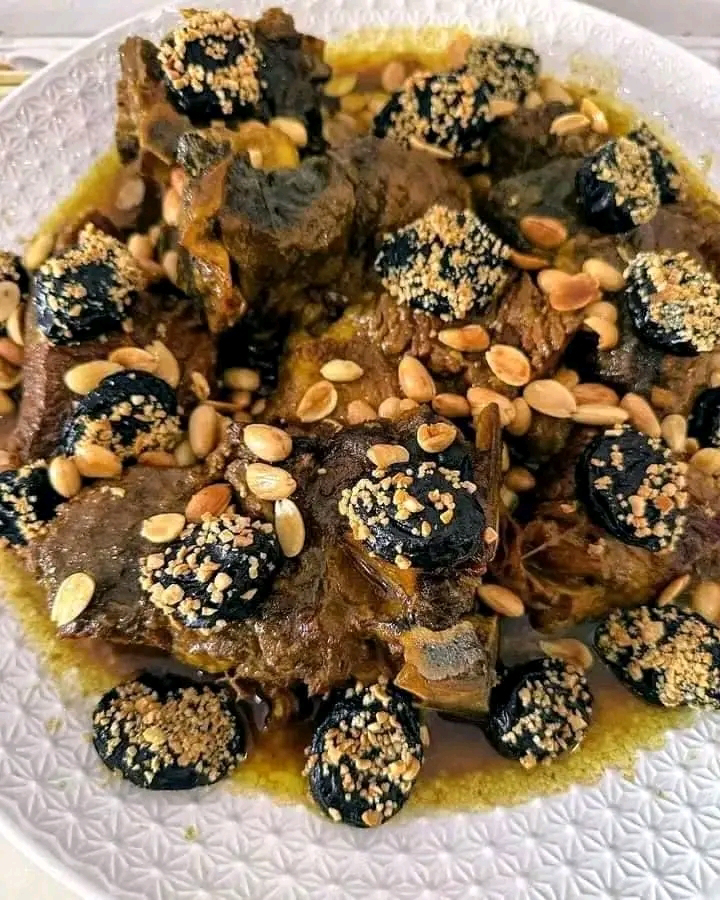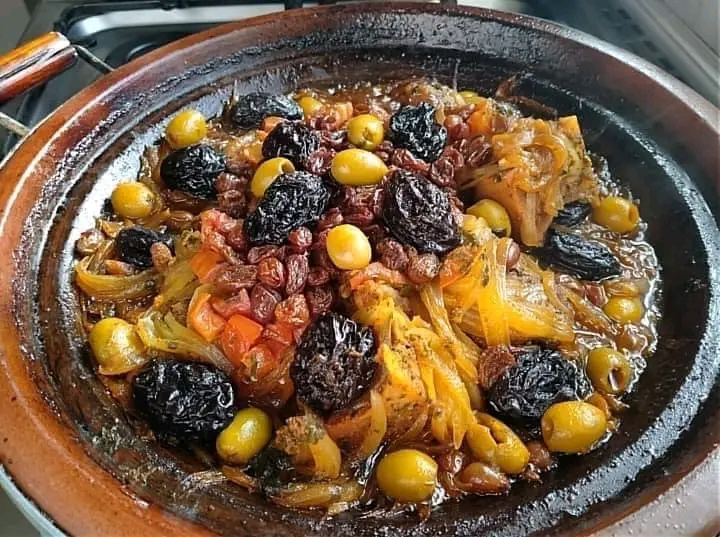Moroccan tagine is one of the most famous and delicious dishes in Moroccan cuisine, symbolizing hospitality and generosity. It stands out for its unique preparation method and rich flavors, combining simplicity with sophisticated taste.
**History of Tagine:**
The name "tagine" comes from the Arabic word for the traditional earthenware pot in which it is cooked. This cooking vessel, with its conical lid, has been used since ancient times. The slow-cooking method enhances the flavors and ensures even heat distribution.
**Ingredients:**
Tagine recipes vary widely across Morocco, but they typically include:
- **Meats:** Such as beef, chicken, or lamb.
- **Vegetables:** Like potatoes, carrots, and peas.
- **Spices:** A blend of spices including turmeric, saffron, cinnamon, and ginger.
- **Dried fruits:** Such as dried apricots or raisins, which add a sweet touch.
- **Chickpeas or olives:** Occasionally added for extra flavor.
**Preparation:**
Tagine is traditionally cooked in a clay pot. Ingredients are layered in the pot and then cooked slowly over low heat. This method allows the flavors to meld and develop a rich taste.
**Types of Tagine:**
- **Chicken Tagine with Olives and Lemon:** Known for its tangy and sweet flavor profile.
- **Lamb Tagine with Prunes:** Balances the savory taste of lamb with the sweetness of dried prunes.
- **Fish Tagine:** A distinct variation made with a variety of vegetables and spices.
**Significance:**
Tagine is more than just a meal; it is a part of Moroccan cultural heritage. It is often served during special occasions and family gatherings, embodying the essence of Moroccan hospitality. The variety of tagine recipes reflects the rich diversity of Moroccan cuisine and the skill of Moroccan cooks in blending local ingredients and spices.
Tags
ماكولات






